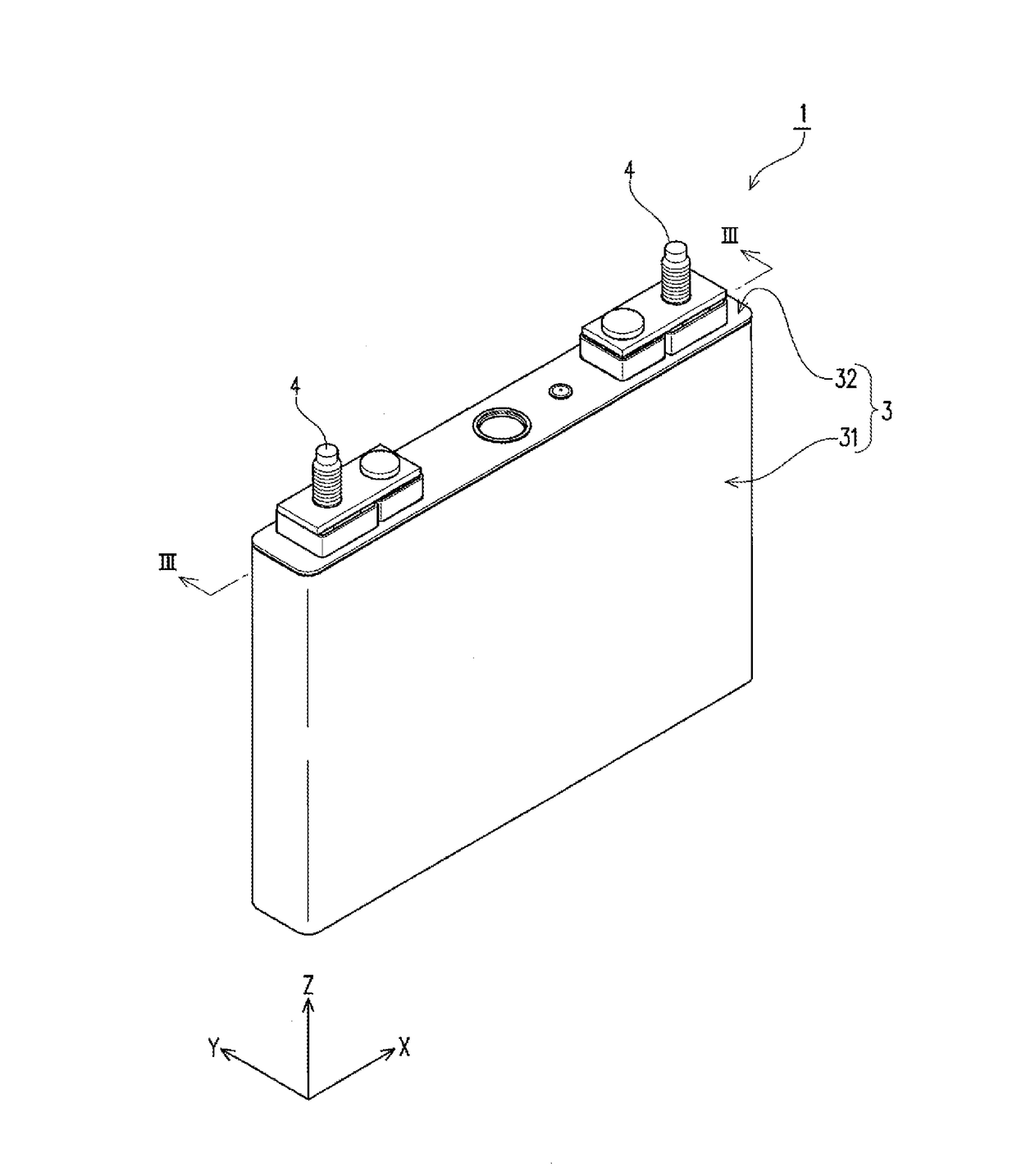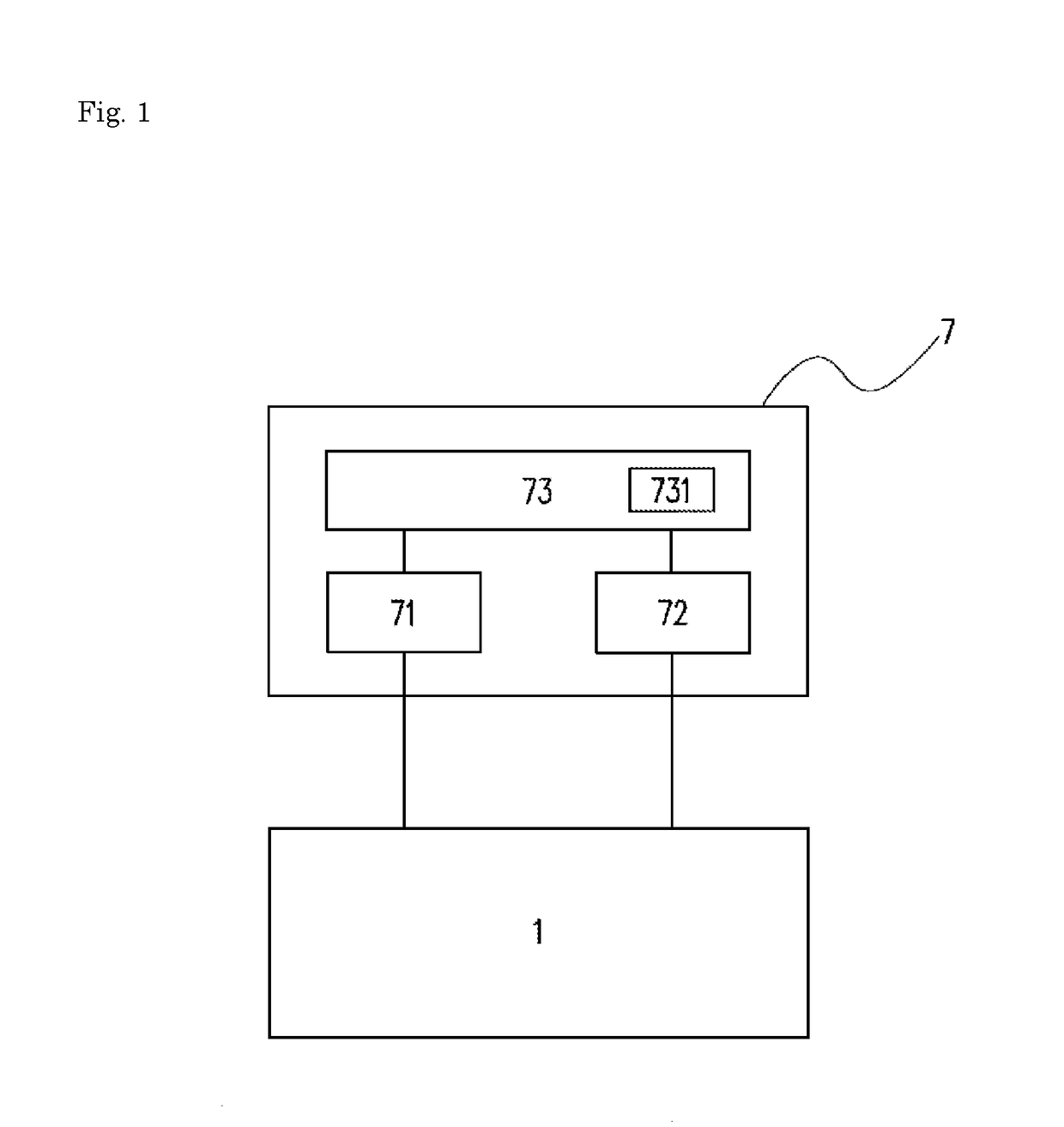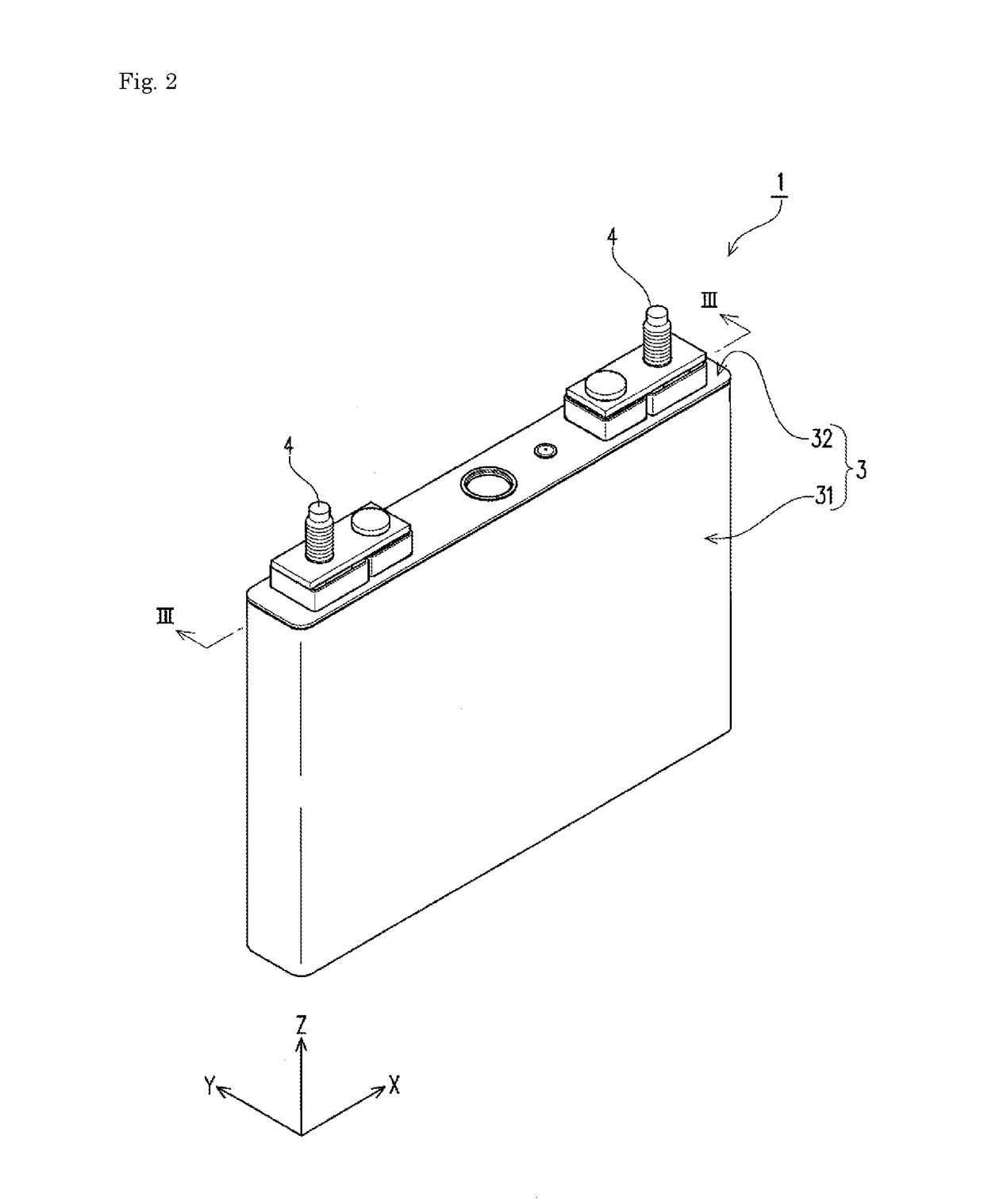Deterioration detector for non-aqueous electrolyte power storage element, power storage device, deterioration detection system for non-aqueous electrolyte power storage element, and deterioration detection method for non-aqueous electrolyte power storage element
- Summary
- Abstract
- Description
- Claims
- Application Information
AI Technical Summary
Benefits of technology
Problems solved by technology
Method used
Image
Examples
example
[0119]Next, an example of the deterioration detection method for a power storage element according to the embodiment will be described in the following. The power storage element used in the example is a non-aqueous electrolyte power storage element including an electrode assembly having LiFePO4 as the positive active material, and a graphite-based active material as the negative active material.
[0120]First, before performing the charge-discharge cycle endurance test to the power storage element, CCCV charge is performed for 4 hours at 1 CA to make the SOC of the power storage element 50% (cell voltage 3.2 V). The power storage element in this state is charged at 5 CA, and a direct current resistance value (first short-term resistance value) RC0 h(1 sec) of the power storage element and a direct current resistance value (first long-term resistance value) RC0 h(1 sec) of the power storage element are measured while being energized respectively for 1 second and for 10 seconds. The mea...
PUM
 Login to View More
Login to View More Abstract
Description
Claims
Application Information
 Login to View More
Login to View More - R&D
- Intellectual Property
- Life Sciences
- Materials
- Tech Scout
- Unparalleled Data Quality
- Higher Quality Content
- 60% Fewer Hallucinations
Browse by: Latest US Patents, China's latest patents, Technical Efficacy Thesaurus, Application Domain, Technology Topic, Popular Technical Reports.
© 2025 PatSnap. All rights reserved.Legal|Privacy policy|Modern Slavery Act Transparency Statement|Sitemap|About US| Contact US: help@patsnap.com



